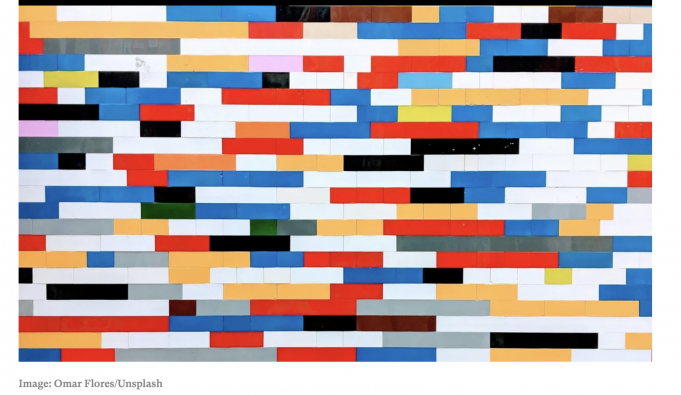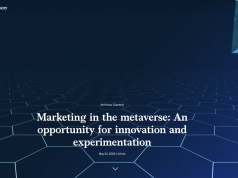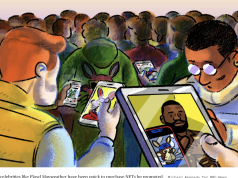Protocol presented by Babble, November 2021
Hello, and welcome to Protocol Entertainment, your guide to the business of the gaming and media industries. This Thursday, industry insiders share their insights on how to build the metaverse, and we take a closer look at the reasons behind Netflix’s stock rollercoaster. Also: push polling!
WE ALL LIVE IN A BABY METAVERSE, BABY METAVERSE
What does it take to build the metaverse? What building blocks do we need, how can companies ensure that the metaverse is going to be inclusive, and how do we know that we have arrived in the ‘verse?
To answer some of these questions, we convened a panel of experts this week for Protocol Entertainment’s first virtual live event, including Epic Games Unreal Engine VP and GM Marc Petit, Oasis Consortium co-founder and President Tiffany Xingyu Wang and Emergeco-founder and CEO Sly Lee.
Getting content moderation right will be key — and challenging. Forty percent of U.S. internet users have experienced hate speech or harassment online, according to Wang. Doing better than existing social media platforms will be key to creating an inclusive metaverse.
- This will require tackling content moderation issues from the get-go. “When we built the last iteration of the web, we didn’t think about safety by design,” Wang said.
- The metaverse may provide a chance for a reset, with Petit arguing that people won’t troll as much if they interface with each other in person. “Voice … reduces the problem,” he said.
- However, real-time voice is also harder to moderate than written text, Wang said. “Voice moderation tools are pretty new,” he said. “We are at the very beginning of this battle.”
- Whatever the solution ends up being, the panelists all agreed that tackling problems like these can’t wait until the metaverse exists. “I’m grateful that we are having these conversations now,” Lee said.
Interoperability isn’t just a technical problem. When people talk about an open, interoperable metaverse, they often bring up the idea of driving a car from Fortnite to Roblox, and all the technical challenges that may entail.
- Taking assets from one game or virtual world to another may sound daunting to developers, but it can be done, Petit said. “I’m a tech guy, and I’m optimistic; we’ll figure out interoperability.” he said.
- The business side may prove to be more challenging. If Epic builds an asset to make Fortnite better, how does it get compensated if people take that asset to a competitor’s game?
- Allowing people to keep those assets also isn’t just about interoperability between competing titles. Letting players grow up with their Fortnite skins, and keep virtual items around for years or even decades, is just as important.
- “We need to build content that can withstand the test of time,” Petit said. “That is going to be a very complex problem.”
The metaverse needs a new type of hardware. The public’s expectations of the metaverse have been shaped by sci-fi movies like “Ready Player One,” in which the characters don VR goggles and haptic suits, much to the chagrin of our panelists.
- “‘Ready Player One’ is really hurting us,” Petit said. Instead of an out-of-body future, he hopes more for experiences that bring interactivity to our everyday lives.
- Lee shared Petit’s dislike for “Ready Player One.” “I particularly don’t like the vision of touch in that movie, with haptic suits and gloves,” he said. “Those are silly. Those won’t happen.”
- Lee’s company has been working on an alternative approach: A device that uses ultrasound to bring touch to the metaverse without the need for gloves.
- The most important lesson from this work? The metaverse doesn’t need to copy the real world, and attempts to bring old metaphors like keyboards into this new world will hold the industry back. “It’s time to end that UI and establish a new UI in the virtual space,” Lee said.
Spoiler alert: We’re already in the beta-metaverse. A lot of us are using platforms that can be considered metaverse prototypes. In fact, these early versions are already as popular as the internet was two decades ago.
- If we combine the numbers from Fortnite, Roblox and Minecraft, we have 300 million people using metaverse-like platforms every month — which equals the total use base of the internet in 1999, according to Petit.
- “We are in the baby version of the metaverse, and it will evolve,” he said.
- In the end, it may even be hard to tell where and when the real metaverse starts. “When did the Big Bang stop?” Lee asked. “I don’t think we are a result of the Big Bang, I think we are a continuation of the process.”
- “We are in the mini version, or the very beginning of the metaverse,” Wang said. To drive it forward, the industry now needs to get everyone else on board. “It ultimately is a question of adoption,” she said.









